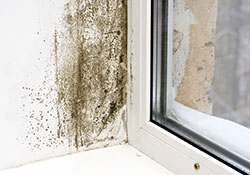Policy

WHO guidelines on indoor and outdoor air quality
WHO air quality guidelines (AQGs) provide recommendations and identify threshold limits for exposure to air pollutants that are based on the latest scientific evidence, and serve as a tool to help policy-makers make informed decisions on tackling air pollution and improving public health. The various AQGs are often used as the scientific basis for legislation at both national and international level, for example for the European Union directives on ambient air quality.
WHO ministerial conferences on environment and health
This series of conferences, part of a European process to protect health and the environment, has identified the prevention and reduction of the burden of disease associated with air pollution as a key priority.
At the Fifth Ministerial Conference on Environment and Health held in Parma, Italy in 2010, governments confirmed their commitment to prevent disease through improved outdoor and indoor air quality, and requested WHO to work towards this objective by providing constantly up-to-date evidence on the health effects of air pollution, as well as policy advice and technical assistance to countries. A mid-term review meeting of the European Environment and Health Process was held in Haifa, Israel, in April 2015 to evaluate what Parma commitments have been accomplished to date, and what still must be done before the next ministerial conference scheduled in 2017.
2015 World Health Assembly Resolution
The sixty-eighth World Health Assembly (WHA), the decision-making body of the WHO, adopted in May 2015 a resolution endorsed by 194 Member States (MS) stating the need to redouble the efforts of MSs and WHO to protect populations from the health risks posed by air pollution.
MS are urged to undertake action in order to raise awareness in the public and among stakeholders of the health risks posed by air pollution, and also to facilitate research, collect air quality data and conduct surveillance of diseases related to air pollution.
Additionally, the WHA resolution for the first time recognized the role of WHO air quality guidelines (AQGs) for both ambient air quality and indoor air quality in providing guidance and recommendations for clean air that protect human health. In particular, it requested the Director-General to strengthen WHO capacities in the field of air pollution and health through the development and regular update of the guidelines, in order to facilitate effective decision making, and to provide support and guidance to MS in their efficient implementation.
The 1979 Geneva Convention on Long-range Transboundary Air Pollution (LRTAP)
The LRTAP Convention is an important mechanism aiming to improve air quality and reduce the effects of air pollution on health and ecosystems in most of the WHO European Region and beyond. WHO coordinates the work of the Joint Task Force on the Health Aspects of Air Pollution, which was established in 1998 within the Convention. The Task Force provides evidence on the health effects of air pollution and promotes use of the Convention's instruments to address these effects.



